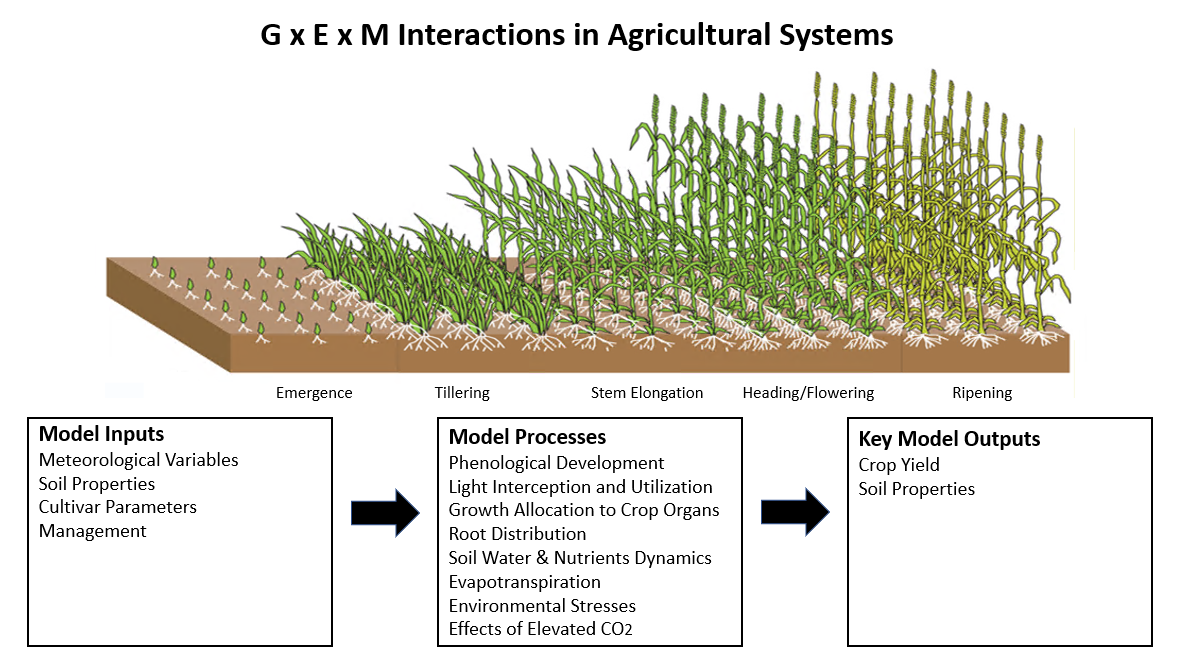| What Are Crop Simulation Models? |

|
Agricultural production managers, natural resource managers, and strategic decision makers require accurate, timely, and cost-effective information to maintain a quality food and fiber supply for the nation and the world. The Adaptive Cropping Systems Laboratory conducts research to develop crop simulators for predicting growth, development, and yield of agricultural crops exploring Genotype, Environment and Management (G x E x M) interactions.

Why Are Our Models Unique?
- Utilize state-of-the-art energy balance methods and two-dimensional discretized soil depiction. All our models use 2DSoil model for simulation of soil processes.
- Allows for more accurate Carbon, Temperature and Water (C x T x W) evaluation
- Allows for better G x E x M separation and assessments
- Significantly more attention on improving tools for climate impact, food security, breeding studies, rotations, and long-term soil management assessments.
- ACSL modeling program thus focused on improving quality and accuracy of modeling tools
